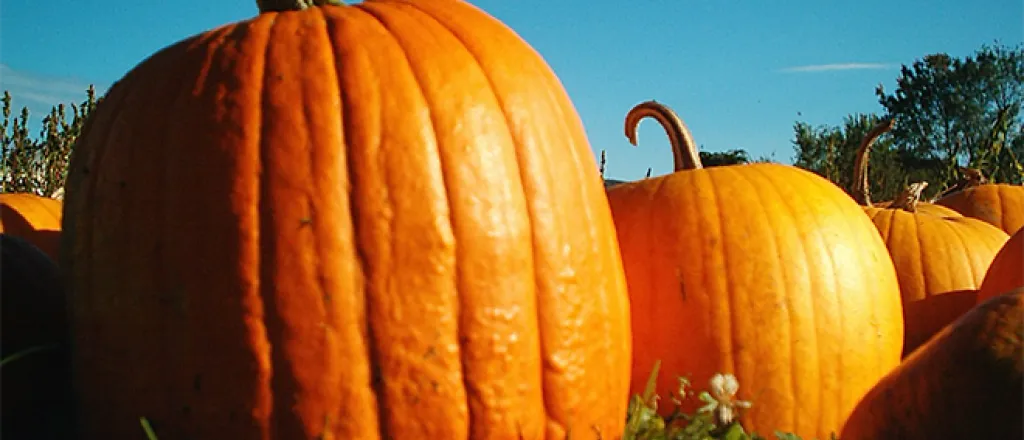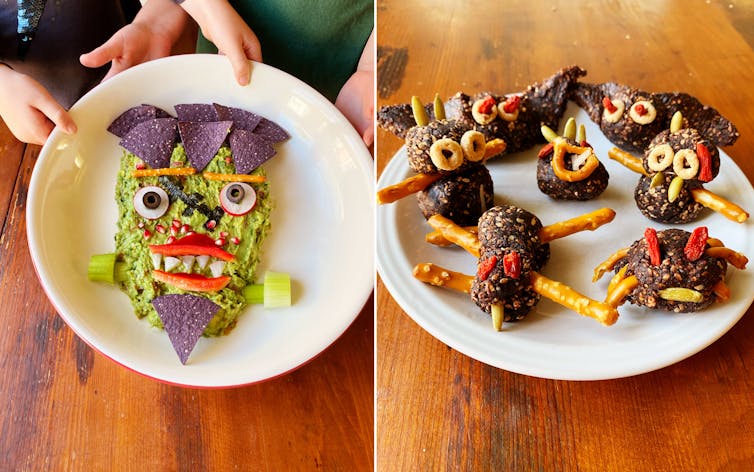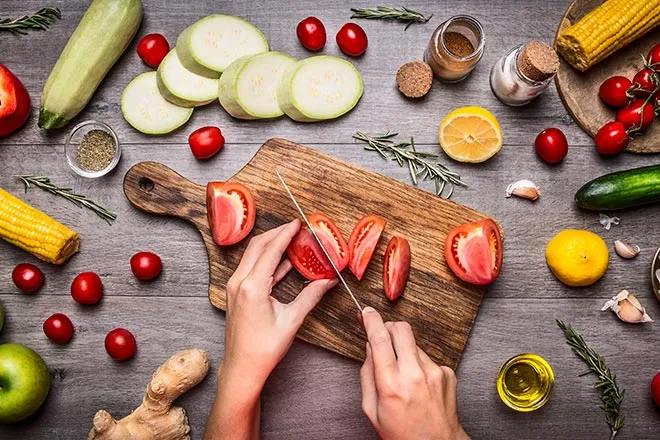
Feeling scared about how your kids can enjoy Halloween this year? Have no fear – healthy snacks are here

Michael Goran, USC Dornsife College of Letters, Arts and Sciences
Halloween is extra tricky this year thanks to COVID-19. But beyond the possible exposure to the virus from trick-or-treating or Halloween parties, there’s the issue of excess sugar intake – and, as discussed below, how it might contribute to lowered immune response and increased risk for severity of viral infection.
For most, Halloween is more than just one event on the evening of Oct. 31. Instead, Halloween typically means the accumulation of large amounts of candy that can linger around the house for weeks to come. Now a good time not only to think about how to celebrate safely this year, but also to consider alternative solutions that let kids enjoy Halloween without it becoming a prolonged exposure to excess sugar. Just like COVID-19 has led us all to think about our travel, which has greatly helped to lower our carbon footprint, it’s also a good moment to think about reducing our sugar footprint at home.
I’m a clinical researcher and professor of pediatrics at Children’s Hospital Los Angeles and have been at the forefront of research in childhood nutrition and health outcomes for over 30 years. Sorting out the links between diet in early life and long-term disease risk is complex, but one clear thing we have learned is that sugar is a major contributor.
Children are born with a built-in preference for sweetness, which was supposed to be a protective mechanism to favor breastmilk and avoid harmful foods from the forest floor. Unfortunately this is backfiring in today’s high-sugar food environment, where 68% of processed foods at the grocery story and 80% of kids’ snacks have some type of added sugar. And it’s not just more sugar, but also many different types of sugar, with more than 200 names as well as alternative sweeteners that have infiltrated our food supply. This combination of preference for sweetness in our new food environment is a recipe for disaster for children, because more sugar and different types of sugar can disrupt the process of healthy growth and development.
Together with my co-author Emily Ventura, I discuss this “perfect storm” in more detail in our new book, “Sugarproof.” In “Sugarproof,” we also provide families with simple strategies, meal plans and recipes for reducing sugar and stabilizing blood glucose levels in children. Along with many other metabolic benefits, this in turn also helps strengthen immunity against COVID-19 and other viral infections. It can also reduce the severity of the infection and associated complications.
Sugar as a health risk in context of COVID-19
A recent study showed that high levels of blood glucose and poor glucose control predicted worse outcomes for hospital patients in terms of death and complications from COVID-19, even for those with no prior history of diabetes. This matters because over time, higher levels of sugar consumption will erode the body’s ability to successfully control blood glucose levels, a process that can begin in childhood.
A recent editorial in the New England Journal of Medicine explains how social disparities in nutrition – like a lack of access to healthy food – are primary drivers of obesity, diabetes and heart disease. To put it another way, a poor diet which leads to obesity is associated with a broad state of systemic inflammation, made worse with conditions like diabetes. Those conditions, in turn, predict more severe outcomes from COVID-19 infection.
New research shows that broad systemic inflammation can disrupt the body’s ability to produce a more targeted immune response to attack the virus. Instead, the body’s immune response seems to mount a larger attack against the broader systemic inflammation, resulting in damage to vital organs. There has never been a better time than now to reduce our consumption of sugar.

Sugar workarounds
Reducing sugar will help you and your kids be healthier, now and in the future. Excess sugar can disrupt your child’s growth and development; setting limits on sugar consumption will prevent these risks. One solution is to take a healthy approach to holidays. With Halloween, the trick is to let kids enjoy some of the treats, but not overdo it.
Here are some ideas for how to make Halloween “sugarproof,” so that it will be a healthier and safer celebration.
If your kids do go trick-or-treating, set limits. Maybe go to fewer houses, or don’t eat all the candy that’s collected. In our book, we introduce the “Switch Witch,” who comes at night to exchange excess candy for a small gift, kind of like the tooth fairy for Halloween.
Let your kids suggest how much they want to keep and how much they want to leave for the Switch Witch and negotiate from there. Leave the extra candy out for the Switch Witch, who exchanges it for a voucher for a fun family activity or a toy.
Limit the amount of candy you buy for trick-or-treaters; it’s likely you’ll see fewer this year, and you don’t want your family to eat all the leftover candy. Avoid buying candy with high fructose corn syrup, alternative sweeteners and other chemical additives. Purchase healthier items, like packets of roasted nuts or other savory snacks.
Consider alternatives to trick-or-treating altogether. You could have a mini-neighborhood block party that is socially distanced, a driveway visit with a few friends, a neighborhood walk while wearing a costume or a dress-up party at home with just your own family.
For younger children, try trick-or-treating within your own house. Or create a fun sensory activity with a Halloween theme: peel the skin off grapes and call them eyeballs, boil spaghetti for guts, use cauliflower as a brain, put it all in bowls and then let your kids mask up, feel the icky stuff and let their imagination run wild.
[Deep knowledge, daily. Sign up for The Conversation’s newsletter.]
For Halloween party treats, make healthy alternatives. We recommend a savory snack to start, like our Guac-enstein dip, a fun guacamole platter decorated like Frankenstein’s monster. You can find the recipe on our blog. Having kids eat something healthy as the evening starts will keep them from overdoing it with sweets later. And when they do have candy, it won’t be on an empty stomach, which helps prevents a dramatic sugar high.
And for sweet treats, instead of cupcakes, cookies or candy, consider alternatives with less sugar. On our blog you can find a recipe for a spooky version of our no-bake chocolate sesame treats, which have zero added sugar. These can be turned into spiders, monsters, bats and tombstones. This is a really easy recipe. So easy, in fact, that your kids can help you make it – just one more fun activity for them on Halloween night.![]()
Michael Goran, Professor of Pediatrics, Center for the Changing Family & Children's Hospital Los Angeles, USC Dornsife College of Letters, Arts and Sciences
This article is republished from The Conversation under a Creative Commons license. Read the original article.

















